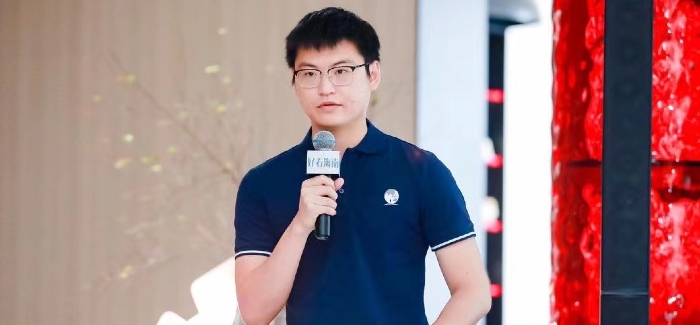Sponsored by Sophia University
Tokyo: the city of neon lights, cherry blossom and this year, the Rugby World Cup. Steeped in technology and innovation, yet still deeply rooted in thousands of years of tradition and heritage, Tokyo has something to offer everyone who visits – whether it’s for study, travel or work.
It might be difficult picturing yourself studying abroad in the first place, let alone learning to adjust to unfamiliar customs and traditions. But it is absolutely possible – and you won’t find a more welcoming nation than Japan.
By 2020, the Japanese government aims to attract 300,000 students to Japan to pursue their studies, but what makes Tokyo, in particular, such an attractive study destination for students from all over the globe?
It’s been named the second-best student city in the world for two years running…
… according to the latest QS Best Student Cities ranking. It’s also a view that’s shared by Klara Kristianingtyas, an international student from Indonesia who’s currently studying a Master’s in Green Science and Engineering at Sophia University in the heart of Tokyo.
“Tokyo is a nice city to live in, to study, and to work. Everything you need is in the city just like any other metropolitan city,” she said.
Tokyo’s patchwork of districts and neighborhoods all with their own identities and offerings make it a truly international place that’s full of contrasts.
“The important thing is to find a place which really fits your lifestyle. If you can see yourself living in a big city like Tokyo, then you’ll know how to enjoy it,” said Klara.
You’ll be able to study for your degree in English at an outstanding institution
In a bid to encourage more students to move oversees and pursue their degree in Japan, many universities offer English-taught degree programs. Sophia University, a highly reputable university which ranks in the top 30 in the QS Japan University Rankings 2019, offers English-taught degree programs in Green Science and Engineering.
We asked Klara to share with us a little bit about her study experience.
“Unlike other engineering programs, in green engineering we had the opportunity to study as many engineering fields as we needed and were constantly introduced to recent developments in science and technology.
“If I didn’t have the option to study the various fields of engineering and had no freedom to choose which field I wanted to join, I would not be where I am today.
“This is a unique aspect of my degree which has been very beneficial and enjoyable.”
You’ll expand your international perspective
Studying abroad comes with many learning curves – and enhancing your international outlook is one of them.
As you work and study alongside a diverse group of individuals who come from all walks of life and bring their own stories and experiences to the classroom, you’ll soon benefit from considering other people’s points of view as well.
“Sophia University gave me mixed learning experiences between Japanese culture and other cultures thanks to the diversity of the students and professors,” said Klara.
Experience a unique and welcoming culture
When asked what her first impressions were when she arrived at Sophia University, Klara was impressed by the hospitality she received.
“I could really feel the unique and welcoming culture, especially from my experience living in an international campus dormitory,” she said.
“We always held a welcome party at the beginning of every semester for new residents. All the residences worked hard in preparing the parties and gave the warmest welcome to new residents,” she added.
Celebrate Yukata Day
Something which you may not experience as a tourist in Tokyo is Yukata Day, an exclusive event at Sophia University where students, teachers and staff wear yukatas, making the campus lively and colorful.
“Every year in the spring semester there is a day where everyone wears a yukata to school – including the professors. During the day, students can experience a Japanese tea ceremony, kanji calligraphy, and so much more,” explains Klara.
It’s a great way for students from all over the world to learn and get a genuine insight into Japanese culture.
Tokyo is a city that likes to invent and reinvent
Tokyo’s tech-savvy attitude means it’s often admired for its state-of-the-art technology. It’s also a gadget paradise for those who love all things sleek, new and exciting. From robots to smart cities, Tokyo is a playful metropolis that doesn’t shy away from change, that’s for sure.
Visit a sakura matsuri (cherry blossom festival)
There’s no doubt the sakura matsuri is one of the most aesthetically pleasing visions in the world, with numerous parks around the city such as Ueno Park hanging their own lanterns during Hanami – an outdoor party that marks the beginning of the cherry blossom season.
Many students at Sophia University also host their own Hanami to celebrate and enjoy the new springtime season, according to Klara.
It’s not just a concrete jungle – Tokyo is home to pristine parks and glorious gardens
Shinjuku Gyoen National Garden, Ueno Park, Imperial Palace East Garden and Yoyogi Park are just some of the many tranquil parks you can escape to when you want to get away from the hustle and bustle of Tokyo’s busy city streets. This is something Klara really appreciated: “It might get a little too busy and there might be times when you think everything is happening too fast and you want to slow down.
“Just be aware that you can always slow down. There’s no need to follow anyone’s pace.”
Tokyo is a city that’s full of color
For many, the first thing that comes to mind when they think about Tokyo is its abundance of neon lights. But neon isn’t the only way Tokyo gets its color.
“Everything is pink during spring to welcome the sakura,” said Klara. “Then the fireworks light up in the summer.
“The leaves start to fall covering the streets with orange to remind you that autumn has arrived, and then, before you know it, the whole city is lit up with winter illuminations which give warmth during the winter.”
It’s transport system is hard to rival
Something else Tokyo does well is its efficient and clean subway that can get you wherever you need to be at a rapid speed, which makes getting around the city a total breeze.
Bearing in mind Tokyo is home to 13 million people, the subway can get busy at times, as Klara told us: “Even though it’s extremely packed during rush hour, the subway gives me the freedom to travel all over the place.”
If on the weekend or during the university break you find yourself wanting to explore more of what Tokyo and Japan has to offer, a bullet train is the probably the best way to do so as they cover vast distances quicker than normal trains.
Bullet trains are notorious for their punctuality. In fact, in November 2017, a Japanese bullet train company issued an apology for departing 20 seconds early.
Fulfil your wanderlust
Speaking of travel… you can’t study abroad without taking an adventure or two. Tokyo has a lot to offer when it comes to fulfilling your wanderlust, such as seeing a kabuki theater performance, a sumo tournament (also known as a basho) or visiting Odaiba in Tokyo Bay – a high-tech entertainment hub on an artificial island. You have to see it to believe it!
For art and culture, you’ll want to head to the Roppongi District and visit the Mori Art Museum and Observatory as well as take a trip into Tokyo Mid-Town. The notorious district of Harajuku is also a must-visit for those who love to shop ‘till they drop.
If you want to deepen your understanding and appreciation for Japanese culture, there are plenty of temples and shrines in the city to visit: Meiji-jingu Shrine and Senso-ji Temple are particularly remarkable.
For those who love a challenge, catch a bullet train towards Mount Fuji and plan a day’s hike. If the hike doesn’t take your breath away, then the views definitely will.
Or, if the thought of hiking tires you out, you can always opt to relax like a real Japanese citizen by visiting an onsen – a Japanese hot spring.
Become multilingual
Many students shun the prospect of studying in Japan simply because of the language barrier, but don’t let that put you off. The majority of public signs also feature English translations, so you shouldn’t have too much trouble finding your way around the city.
The people are extremely welcoming too, and if you choose to embrace the local customs and culture and try to learn a bit of Japanese too, you’ll be met with even more warmth and appreciation.
In fact, Klara found that having made friends with people from all over the world, not only did she learn Japanese, but the languages spoken by her friends too.
“I have friends from all around the world and we still keep in touch with one another. Everywhere I go now I always have a friend to meet and a place to stay,” she said.
Japanese is spoken by 128 million people and is considered a valuable language to have. Here are a few phrases to help get you started:
Konnichiwa – Hello/Good morning
Genki desu ka – How are you?
Arigatou gozaimasu – Thank you
Gomen Nasai – I’m sorry
Namae wa _ – My name is _
Ja Mata – See you later/Goodbye
You’ll be spoilt for choice when it comes to food
And finally… the food! There’s more to Tokyo than fresh sushi and noodle bars. When you start eating out for the first couple of times it may be a case of trial and error while you become accustomed to the range of flavors and textures that entertain your palette. Not everywhere will have an English-language menu either, so choose carefully when you order!
Tokyo is home to the most Michelin-starred restaurants in the world and it’s not unusual to find upscale cuisine establishments and inventive street food stalls sharing the same street. As long as the food is good, everyone is happy.
One more thing – when it comes to eating and drinking in Tokyo (and Japan in general), it’s believed that food and drink should be enjoyed. This means no multi-tasking – so no eating or drinking on the subway please!















